 Your new post is loading...
 Your new post is loading...
Although Ultra HD was the visible headline story from IBC2013, with demonstrations of the new format everywhere, the serious business, when you scratched beneath the surface, revolved around multiscreen TV yet again. The technologies to get multiscreen deployed and then make it a compelling user experience have dominated the last five shows, with only 3DTV offering any serious challenge for the crown before disappearing off our radar. This year the focus was on personalizing and monetizing multiscreen TV more effectively, while there is also a trend towards end-to-end multiscreen solutions (including multi-vendor pre-integrations) and managed services. A key driver for these last two trends is the need to help smaller operators into the multiscreen market.
A preview of new products, demonstrations and other important technology that is being highlighted at IBC : NEW: Security and ID for multiscreen video NEW: Online video platform developed specifically for premium content CONFERENCE PICK: ‘Broadcast, and Beyond: Reshaping the Media Ecosystem’ DEMO: Multiscreen service monitoring that boosts QoE HOT: ACCESS demonstrates premium content sharing for operator homes D-VDN enables backhaul savings for catch-up TV Multiscreen protection for streamed OTT Better business management for on-demand across all platforms Business-Integrated OTT Solution from Pilat Media
ACCESS and Verimatrix announced at TV Connect that they have jointly produced a new product, Verimatrix Gateway to address security concerns around the adoption of multiscreen media sharing. The new product combines NetFront Living Connect, the Digital Living Network Alliance (DLNA) component from ACCESS, with the ViewRight Gateway security solution by Verimatrix to provide an integrated security and in-home media sharing solution. The at-show demo sees ViewRight Gateway enable translation between incoming content streams from a managed distribution network, or stored recordings, and corresponding stream formats that are optimized for in-home distribution using NetFront Living Connect. The demonstrated and trusted secure formats are DTCP-IP and enhanced security HLS.
MPEG DASH is the biggest factor to consider -- or is it? Here are the key features to know about before making a decision. 2012 saw significant progress on several fronts for media servers. Some changes were small but important, such as naming conventions -- Adobe dropped Flash from its media server names, for instance -- while others were much more impactful for the industry going forward -- almost everyone agreeing that Dynamic Adaptive Streaming over HTTP, DASH for short, was worth supporting. In this year's Buyer's Guide, we'll take a look at a few key features you'll need to know about to make an informed decision.
The big focus for 2013 at Cisco Service Provider Video Technology Group is ‘unity in video experiences’. What that means in practice is taking multi-screen TV to the next level, ensuring that Pay TV services are available on every device around the home and beyond and that the service feels like a unified whole, just delivered to different screens. Cisco has combined its existing cloud and network capabilities with the client-side software products and knowledge acquired through NDS to enable ‘unity in video experiences’. Those two companies were married last summer and the result of that union, after a five month gestation period, is Videoscape Unity, which was introduced at CES this week. This platform is the basis upon which Cisco service provider customers can build their next-generation offers.
The new HbbTV-Requirements Group is dedicated to specifying requirements for version 2.0 of the standard. IRT contributed a document with feature proposals for HbbTV 2.0, including several features from the HBB-NEXT project by IRT and TNO: identity management, second screen / multi-screen and several aspects of media synchronisation. Based on these contributions, IRT and TNO received mandates to work out more detailed feature descriptions in HbbTV feature templates. These will be used to discuss and decide which features will be supported by HbbTV 2.0.
The recent International Broadcasting Convention highlighted multi-screen services: service delivery platforms and video gateways. Anyone experienced in going to major trade shows knows that there’s no way you can cover all the ground or uncover every gem hidden along the path, especially at a tradeshow as big as the International Broadcasting Convention (IBC) in Amsterdam. My own search criteria were at the intersection of TV software – which has always been my focus – and multi-screen delivery, the big news at IBC this year.
While many connected television devices and displays now support web standards such as HTML, CSS and JavaScript, they invariably differ in their capabilities and conformance to standards. The BBC has developed an abstraction layer to decouple its own applications from these underlying device complexities. The corporation is planning to make its TV Application Layer available to third parties to help stimulate the market for connected television applications. Although the emerging HTML5 specification is often seen as the solution to interoperable web applications, in practice there are many differences in compatibility between devices that claim support for web standards. This is a familiar problem on the web but the fragmentation of different flavours appears to be even more of an issue with consumer electronics products. The BBC TV Application Layer or TAL attempts to deal with the differences between devices, such as remote control key mapping, media player interfaces, networking and storage. In theory this means that the BBC can develop and deploy applications on a well-defined interface without being aware of the specifics and idiosyncrasies of each device.
Or indeed a functional specification or project plan. Here are 10 things to consider including your content, stakeholders and audience. If you're writing a requirements document, functional specification or project plan for any new product or service you'll probably be thinking about scope, risks, manpower, technical resources, availability of equipment and third-party engagement. At the same time you'll be looking for quick wins like re-using content and longer-term gains like perhaps streamlining internal work processes. Clearly, there's a balance to be struck; how much can you achieve in time and on budget? But what are the specific issues you face when building a video service? I've worked on four big video projects over the past seven years - at NBC Universal, Virgin Media, ITN and Trinity Mirror - and here are some of the things I've had to consider from a logistical and technical (rather than aesthetic) perspective.
Cisco revealed today its expanded and enhanced content delivery network portfolio, branded as the Cisco Videoscape Distribution Suite (VDS). Cisco VDS is an open platform that delivers video content across multiple screens, multiple protocols, multiple applications and multiple networks. VDS serves as the network distribution engine behind the Videoscape architecture. It is a complete, interoperable and holistic solution that bridges cloud and network functionality. Highlights: -- With the introduction of VDS, Cisco is the only company in the industry providing a complete product suite with all the capabilities needed for third-generation content delivery. In addition, Cisco has integrated significant enhancements to the current Videoscape Distribution Suite Portfolio: -- Cisco VDS hardware -- Cisco VDS Service Manager (VDS-SM) -- Cisco VDS Television (VDS-TV) -- Cisco VDS Internet Streamer (VDS-IS) More on same topic : http://bit.ly/Sx3glo
Following up on the recent announcement that Adobe worked with NBC to provide live streaming for U.S. sports fans, Adobe has announced a similar cooperation with the BBC. Adobe has developed several products to track these moving targets, and the BBC and NBC are using their latest platform, dubbed Project Primetime. This integrated platform includes Adobe Media Server (AMS), Adobe Access DRM, the Auditude video ad platform and Site Catalyst analytics. The BBC’s requirement for games coverage was to simultaneously stream to smartphones, tablets and connected TVs with support for Windows, Mac OS, iOS and Android, as well as the TVs. The BBC also wanted to easily create highlight packages for on-demand viewing. The BBC will be using parts of the Primetime platform, not having the need to serve ads. The challenge was to create an efficient publishing platform for the relatively short timescale of the Games. They need to easily create highlights on the fly to deliver to their content management system (CMS). Adobe supplied the Primetime Highlights Server SDK to facilitate this process
Motorola Mobility says it will soon begin trials on a new cloud-based digital video recorder system that, at least on paper, has the potential to kick-start the pay TV industry’s ambitious yet cumbersome TV Everywhere initiative. The company’s networked DVR could theoretically fulfill the wide-reaching promise of TV Everywhere, allowing subscribers to multichannel services the ability to access their TV programming on devices ranging from notebook computers to tablets to smart phones. (It also spares pay TV services the expense of leasing out millions of DVR set-top boxes.)
|
A preview of new products, demonstrations and other important technology that is being highlighted at IBC : NEW: Edgeware promises new solution to help scale multiscreen TV NEW: Witbe launches new QoE video robot for multiscreen testing DEMO: Advertising and alternative content insertion in ABR video HOT: Thomson shows HbbTV1.5/MPEG-DASH streaming solution CONFERENCE: ‘The Digital Fight for the Net Generation’ Testing for MPEG DASH, HbbTV and CI+ Broadpeak highlights its innovative CDN solutions
As more Pay TV content is delivered as streaming video to the television, so the requirements for improved audio become more obvious. If operators want consumers to move seamlessly between their broadcast and IP services within their UI environment, like when they are watching VOD on hybrid STBs, they need to avoid a sudden loss of quality from, for example, 5.1 Surround Sound to simple stereo. Raising the streaming Quality of Experience (QoE) to match that of broadcast delivery encompasses many challenges. We need subtitling and audio description to become the norm, and trick-play functions to match a local PVR for content delivered from the cloud. There are high hopes that improved compression and CDN technologies will deliver broadcast-standard picture quality and reliability at some point.
With the number of devices—and content providers— growing, 2013 was the year multiscreen viewing came into its own.
In 2012, streaming media was all about multiscreen delivery. If given the preference, viewers would rather watch online video on their mobile devices or their big screen TVs than on their computers. No one expects computer viewing to go away, but the growth for 2013 will certainly be in the living room as streaming video becomes more like broadcast TV. We gained a new term in 2012 to describe what we were seeing: "co-viewing." At the 2012 Streaming Media West conference in Los Angeles, keynote speakerBrandon DiMassa, senior vice president for business development at TV Guide Digital, unveiled surprising results from a company survey. "Almost 50 percent of our users are telling us that they're doing something that is now being called co-viewing. There's one person who has a remote control watching television, another person with a different device in the room streaming something else on their iPad, their iPhone," DiMassa said. Looking back, a few key stories defined the multi-screen experience for 2012 and promise to lead the way in 2013.
The new HEVC (High Efficiency Video Coding) compression standard will give Pay TV operators like Danish cable operator Stofa the opportunity to increase the quality of multi-screen video and that could have important implications for Connected TV. According to Thomas Helbo, CTO at Stofa, “It is an interesting idea to have high quality TV provided as a multi-screen solution to the big screen TV in the living room. Over the next 5-10 years we will see more services change from DVB-C (classic cable television) to IP and at the same time see an increase in the quality requirements for IP video streams.”
There is an industry consensus that HEVC (High Efficiency Video Coding), the draft compression standard, will have a dramatic impact on the industry thanks to its ability to eventually halve bit rates compared to MPEG-4 AVC (H.264), the current encoding Gold Standard that it will complement but ultimately succeed. And as with all encoding, if you create sufficient extra coding efficiency to halve bit rates then you can also choose to leave bit rates the same but double picture quality, or turn the bandwidth/quality dial to any point in between. Encoder vendors are working towards deployments of the new codec as early as next year, probably starting with multi-screen TV services and fixed line IPTV.
ZTE Corporation has announced a full hardware and software solution integrating low bit rate high-definition (HD), Over the Top (OTT) TV, and multi-screen convergence at this year's Broadband World Forum 2012. The solution supports OTT services on multiple screens for varying devices (TV, PCs, tablets and mobile phones) and employs ZTE's low bit rate HD technology to reduce transmission bandwidth, which assists operators with low-cost network transformation and platform construction and accelerates the deployment of OTT services. With the improvements in visual mental model-based pre-processing, adaptive transformation, neural network-based vector quantisation, human eye perception of quantised errors and the content-adaptive rate control, ZTE's low bit rate HD coding technique enables the system to transmit 720p video with a code rate of 3Mbps rather than 8Mbps, greatly reducing the pressure of capacity expansion on operators and improving users' service experience.
Xstream has launched a White Label solution for Connected TV apps, claiming it is a one-app-fits-all solution covering both Smart TVs and game consoles (PlayStation and Xbox) that will therefore reduce time to market for companies needing a connected app. It is said to be one of the first White Label solutions for Smart TV apps anywhere and will cover the majority of the Smart TV market. Xstream has developed a user-friendly interface that can be customized to fit any company’s branding and design guidelines or special needs, and this sits on top of an app engine that Xstream maintains. The company has already performed the user experience optimisation, DRM and API integrations needed, including “all the boring and time consuming stuff you need,” in the company’s own words. The app can be connected to Xstream’s online video platform, MediaMaker without further effort, or can be connected to other online video platforms via APIs.
Vendor Showed ‘Linear Extensions’ Technology at CableLabs Interop Event Last Month.
Dynamic ad-management vendor BlackArrow is touting a suite of services designed to let pay-TV operators use traditional linear TV advertising systems to deliver the same broadcast ad load -- or swap them out to play targeted ads -- to tablets and other IP video devices.
The new services include: Linear Replication, which uses linear schedule ingest and dynamic ad insertion to replicate the original linear TV ads on tablets and IP devices; and Linear Addressability, which can swap out linear ads and replace them in real time with household-addressable spots. BlackArrow’s Linear Extensions use CableLabs’s new Event Signaling and Messaging (ESAM) specification as well as SCTE 130 standards for dynamic ad insertion.
The technologies used to deliver content to multiple screens is still relatively new and non-standardised. Content and service providers will need to weigh their options carefully to deliver appealing services that make business sense. Stuart Thomson looks at some of the issues.
StormTest Development Center enables programmers and operators to go beyond traditional, standalone second-screen application testing and gives them the opportunity to automate the testing of the synchronization between the primary and secondary screens and any other inter-device interactions to ensure the highest quality of experience for end-users. See product page : http://bit.ly/P2gJgS ;
To create applications and systems that are easy to use, it is crucial to understand the user and the context in which the app will be used. Understanding the context helps design systems that anticipate use cases at a relevant time of use. The more unobtrusive and transparent the experience is at the time of use, the better the design. This means the user does not have to think about the device he is using, changes in the environment, or changes in context, and can rely on great functionality and ease of use independent of his situation. In traditional systems, the context of use did not change much. Whether the use was in the office or at a personal computer at home, the surroundings were similar and there was no need to adapt to different environments. In today's world, smartphones, tablets, laptops, and smart TVs provide different services in different contexts. These services are consumed by a variety of users and require different interaction models, use cases, and planning. For this reason, UX professionals should first design for the context of use in order to provide better experiences and ultimately enhance the intended purpose of the product.
|
 Your new post is loading...
Your new post is loading...
 Your new post is loading...
Your new post is loading...






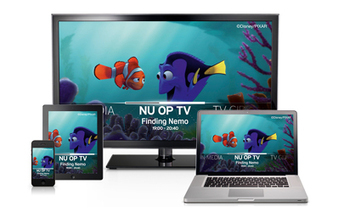
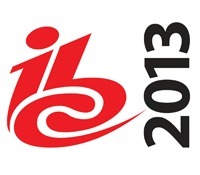



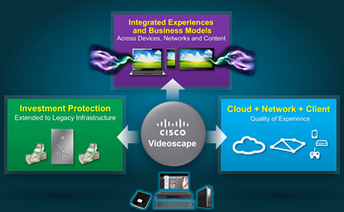



![Cisco's 'Videoscape Distribution Suite' Revolutionizes Video Content Delivery to Multiple Screens [PR] | Video Breakthroughs | Scoop.it](https://img.scoop.it/W0kbhecc-BIEWNlZDC1YPTl72eJkfbmt4t8yenImKBVvK0kTmF0xjctABnaLJIm9)


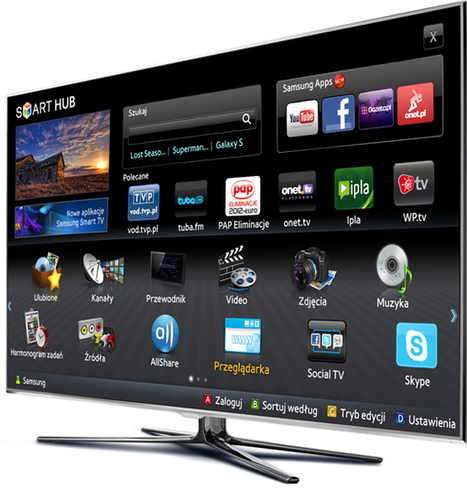





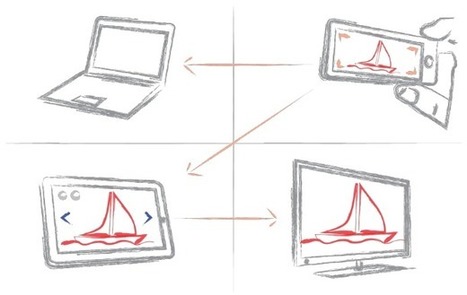





Quite realistic overview of the HEVC. 2015 for the beginning of massive deployement.